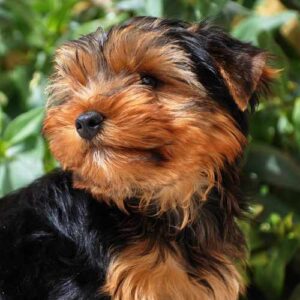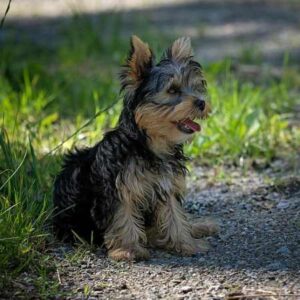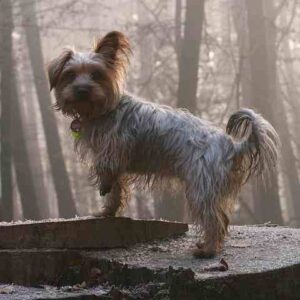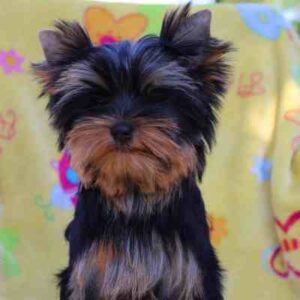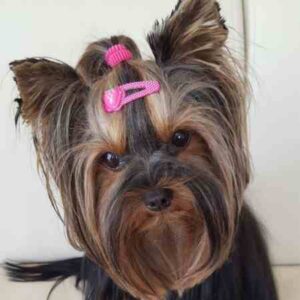When it comes to toy breeds, few can match the charm and cuteness of the Yorkshire Terrier. With their petite size, luscious locks of fur, and spunky personalities, these adorable pups have captured the hearts of dog lovers everywhere. Whether you’re already a fan of these furry little friends or you’re simply curious about what makes them so special, read on to discover why Yorkies are truly one of the most adorable toy breeds around.
Size and Proportions
Yorkies are a small breed of dog that belong to the toy group. They are often referred to as a “teacup” breed due to their miniature size. The standard size of Yorkies according to the Kennel Club breed standard is between 17cm to 23cm in height at the shoulder, with a weight of around 2kg to 3kg. However, some Yorkies may be smaller or larger than this size range.
Proportions are an essential aspect of a dog’s physical appearance, and Yorkies are no exception. Yorkies have a compact body with a proportional head, which creates an adorable look that is highly sought after by dog lovers. The head should be small and flat on the top, with a medium-length muzzle that tapers towards the nose. The eyes should be medium-sized and dark, with a sharp, intelligent expression.
There is little difference between the size and proportions of male and female Yorkies, and the breed standard has no specific requirements for gender differences. However, some males may appear to have a larger head and a broader chest than females, while females tend to have a more delicate build. Additionally, female Yorkies may weigh slightly less than males, although the difference is generally not significant.
Coat and Colour Variations
Yorkshire Terriers are known for their luxurious coats, which are one of the breed’s most distinguishing features. There are three main types of coats that they can have: silk, cotton, and wool. The silk coat is the most common and desirable type, as it is long, straight, and shiny. Cotton coats, on the other hand, are shorter and softer, with a slightly wavy texture. Wool coats are the least common type and are characterized by their curly texture and thicker appearance.
In terms of colour, the most common Yorkie coat colour is black and tan, which is characterized by a jet black coat with tan markings on the muzzle, eyebrows, legs, and chest. Other colour variations include blue and tan, which has a blue-grey coat with tan markings, and parti-coloured, which features a white base with black and tan patches. Chocolate and tan, gold, and sable are also popular colour variations. Yorkies can also have a solid coat colour, such as silver or white.
Facial Features
Yorkshire Terriers have distinct and charming facial features. Their head is small and flat on the top, with a medium-length muzzle that tapers towards the nose. The head is proportional to the rest of the body and gives the dog a cute and charming appearance. The skull should be moderately flat, with a shallow stop and a moderately sized nose. The jaw should be strong and well-defined, with a scissor bite.
Yorkies are known for their bright and expressive eyes. The eyes should be medium-sized and dark, with a sharp, intelligent expression. The colour of the eyes can vary depending on the dog’s coat colour, but they should always be bright and clear. A Yorkie’s eyes should be free from discharge and any signs of redness or irritation, which can be a sign of infection or other health issues.
The ears are another defining feature of their facial appearance. They should be small and V-shaped, with a pointed tip that stands erect. The ears should be carried high on the head, and when alert, they should stand straight up. The ear leather should be smooth and hairless, with no signs of scarring or damage.
Body Structure
Yorkies have a small and compact body structure, with a well-proportioned frame. The chest of a Yorkie should be moderately wide, with a well-sprung ribcage that tapers towards the abdomen. The ribcage should be deep, with the ribs extending to the elbow joint. The back should be level and strong, with a short and muscular loin that blends into the hips.
The limbs of a Yorkie are also an important aspect of their body structure. They should be straight and well-proportioned, with moderate bone density and muscular development. The front legs should be straight and parallel, with well-angled shoulders that allow for free and easy movement. The hind legs should be well-muscled and angled, with well-developed thighs that provide strong propulsion.
The tail of a Yorkie is another defining feature of their body structure. It should be docked to a medium length, with the tip of the tail level with the back. When in motion, the tail should be carried high and level with the back, adding to the dog’s overall balance and poise.
The Yorkshire Terrier is a breed with a unique and charming appearance, thanks to their luxurious coat, small and proportioned body, and distinctive facial features. Their bright and expressive eyes, erect and pointed ears, and well-balanced body structure all contribute to their overall look and personality. Maintaining their coat and proper grooming is essential for their health and appearance, and understanding their body structure can help provide proper care and ensure their well-being. It’s no wonder that Yorkies are one of the most adorable toy breeds and a popular choice among dog lovers, not just in the UK.
